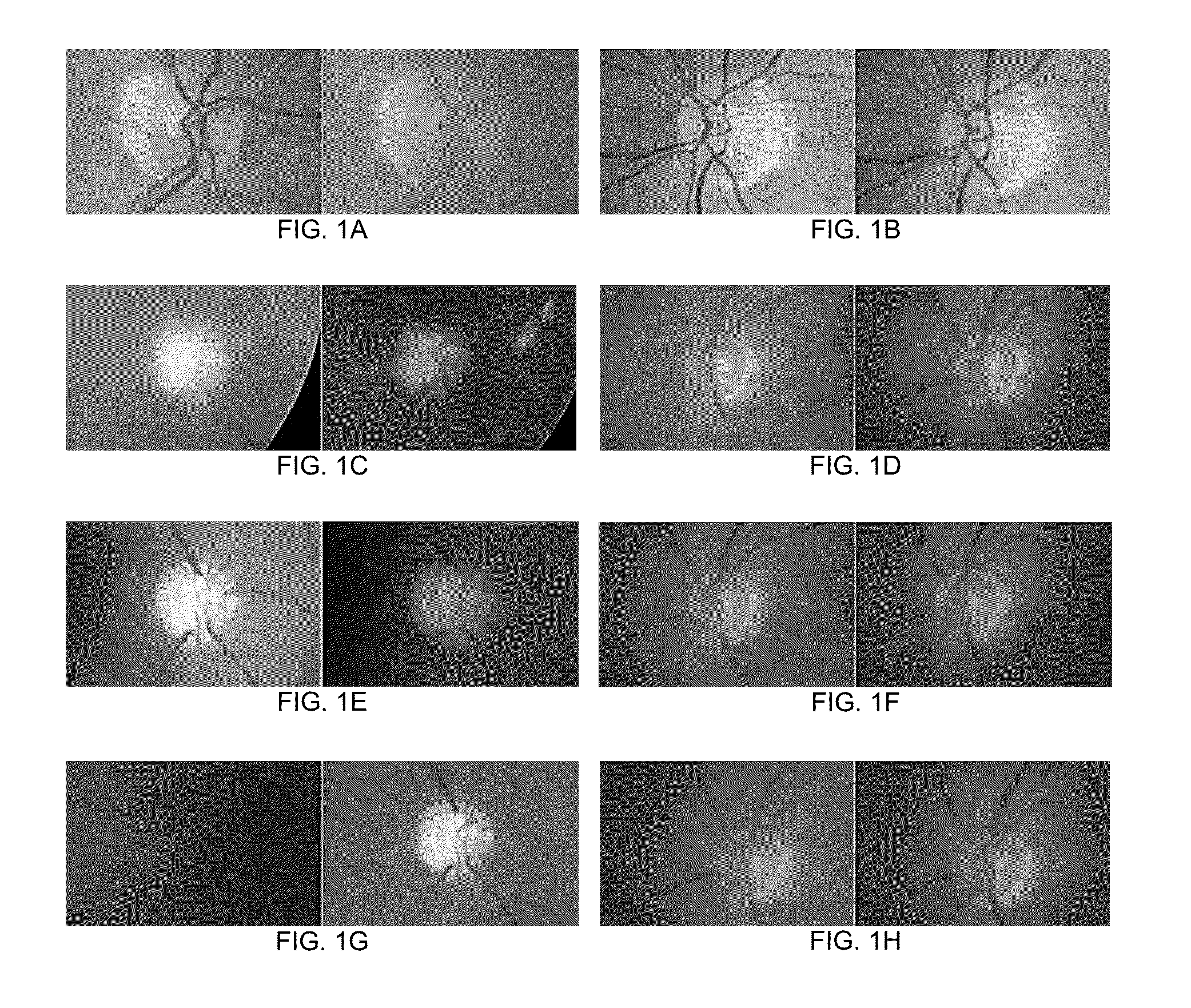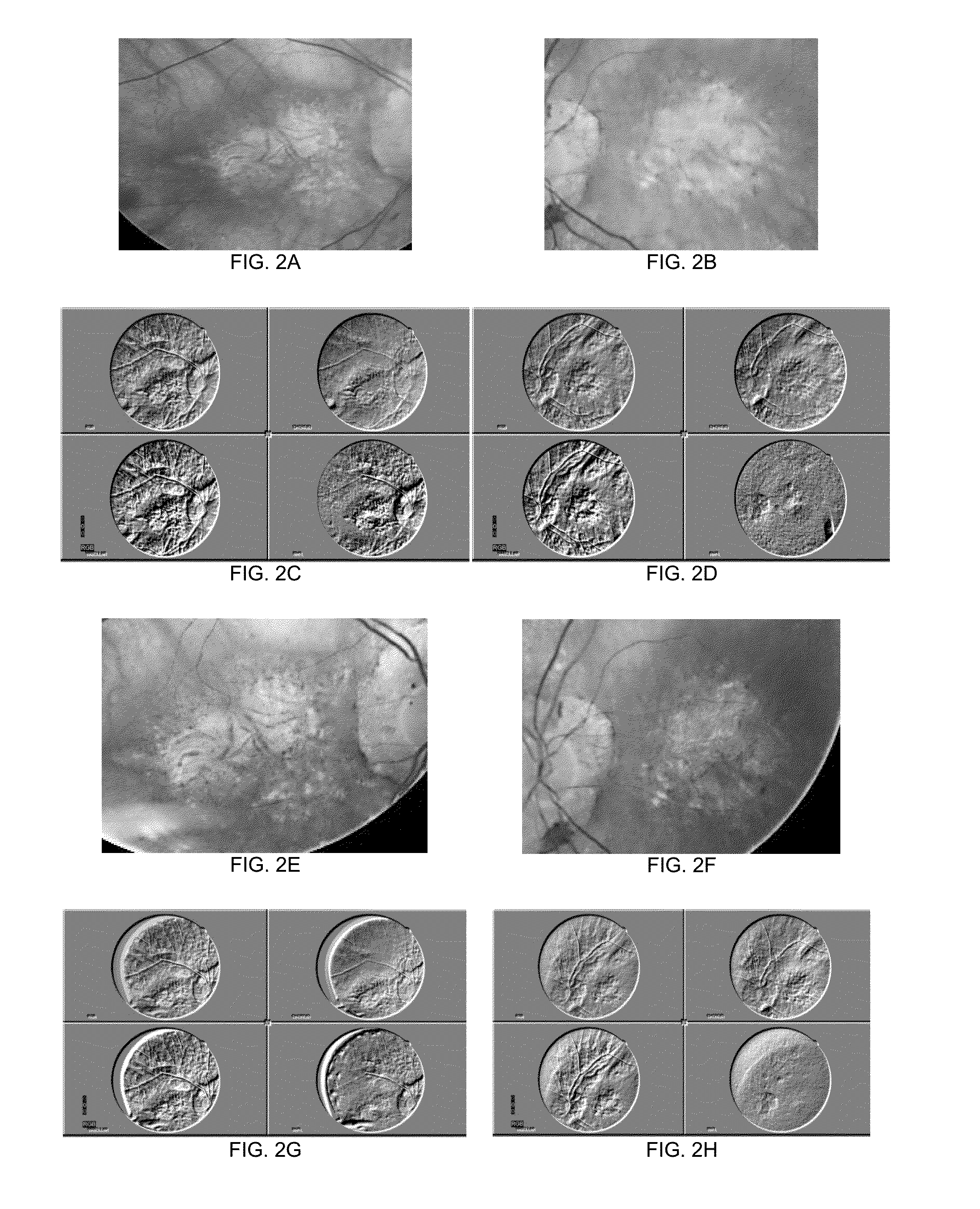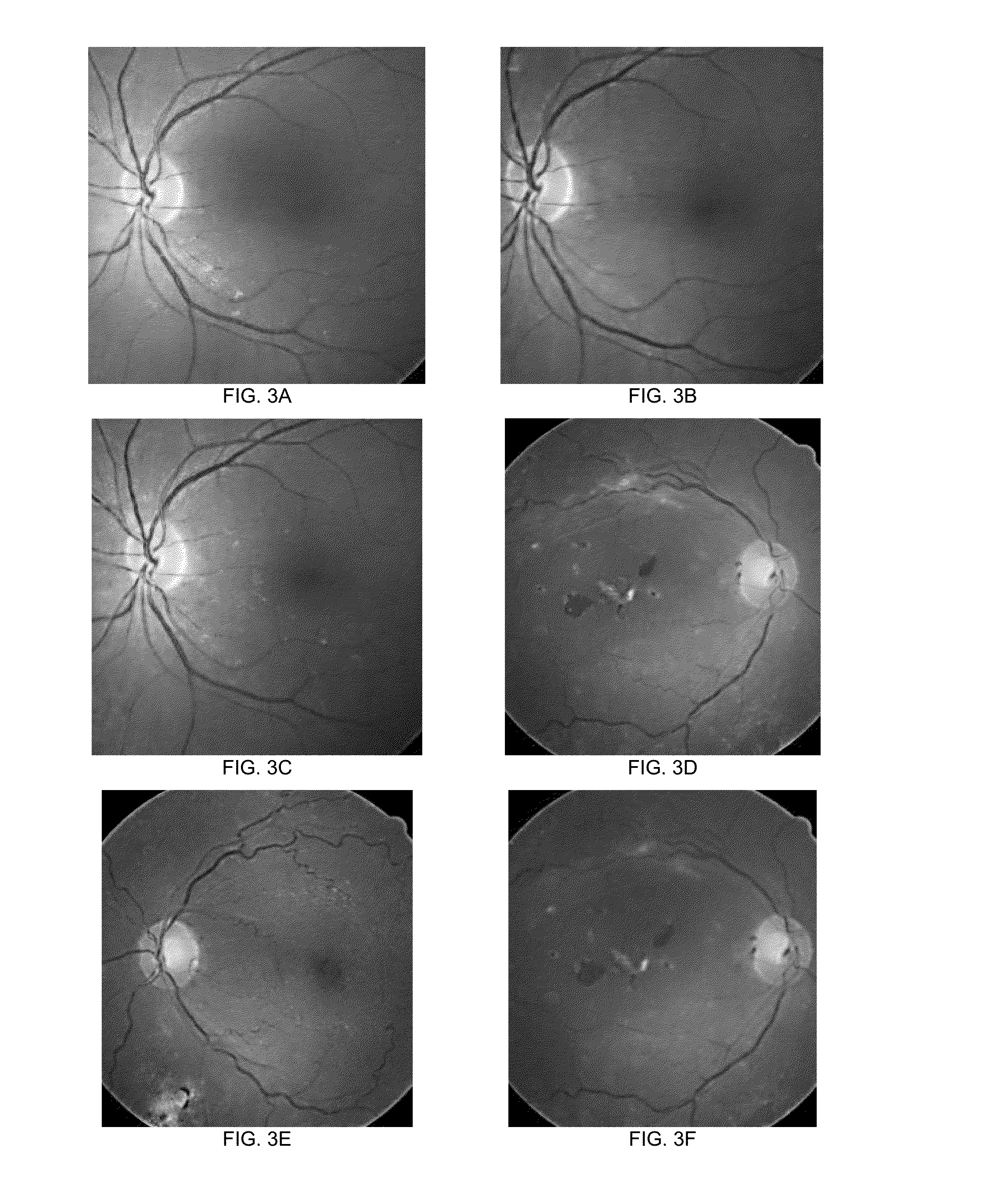Detection of nutrient deficiencies influencing ocular health
a technology of nutrient deficiencies and ocular health, applied in the field of detection of nutrient deficiencies affecting ocular health, can solve the problems of reducing reducing the range of “ocular diseases”, and thought to decrease naturally, so as to reduce the risk of progression, increase contrast, and increase contrast
- Summary
- Abstract
- Description
- Claims
- Application Information
AI Technical Summary
Benefits of technology
Problems solved by technology
Method used
Image
Examples
example 1
Materials and Methods
[0085]Imaging of subject posterior poles: retinal photographs were taken using a Canon CR-1 Digital Retinal Camera and analyzed using EyeScape Digital Imaging Software, version 7.5.5.
[0086]The settings used for taking retinal photographs were such that optimal contrast and brightness for each subject was achieved. Most retinal photographs were taken with a dilated pupil. Some subjects have naturally very large pupils. In these cases, pupil dilation may not have been required to obtain sufficient images. The Canon CR-1 has a setting for small pupils that was used as required.
[0087]Determination of retinal lesion size: Retinal photographs were examined for signs of ocular disease. VRTD lesion size was measured directly from the computer screen display of a subject's retinal photograph. One “unit” was equivalent to one tenth of the diameter of the posterior pole, within the vascular arcades.
[0088]Recording of other health characteristics: non-ocular health conditio...
example 2
Retinal Photograph Analysis Indicated a Positive Correlation Between VRTDs and High NDSs and Lutein and Zeaxanthin Treatment Resulted in Decreased NDS and Lesion Size
[0090]Subject Description: Data were collected from 40 subjects having asymptomatic or symptomatic VRTD over a period of 4.5 years.
[0091]Treatment: Subjects were treated daily with lutein and zeaxanthin as described in table 1. Nutritional deficiency scores (NDSs) and lesion sizes were measured at various time points. The nutritional deficiency scoring rubric involves a scoring system of 1 to 5, wherein 1 indicates a healthy eye having sufficient lutein and zeaxanthin and 5 indicates a severely nutrient deficient eye, wherein lutein and zeaxanthin levels are low relative to a healthy eye and correlate with ocular disease.
TABLE 1Raw data collected from subjects during preliminary lutein zeaxanthin trial. Combined Lutein (L) andZeaxanthin (Z) NDSs are provided for each eye (OD and OS). Plh indicates partial lamellar hole....
example 3
LZO3P Dosage Response Trials Indicate Positive Results for Treatment Ocular Health and Nutrient Deficiency as Indicated by Decreased Nutritional Deficiency Scores and Improvement in Various Ocular Symptoms
[0094]Subject Description: Data were collected from 41 subjects having various states of ocular health at a first time point and a second time point and optionally a third time point, the second time point being three months after the first and the third time point being three months after the second. Treatment was started after the first time point.
[0095]Treatment: Subjects were treated daily with the LZO3P composition (i.e., lutein (20 mg) zeaxanthin (5 mg), omega-3 fatty acids (180 mg) and DHA (120 mg)) following an evening meal comprising protein. Nutritional deficiency scores (NDS) and lesion sizes were measured prior to and following 3, and optionally 6, months of treatment. The nutritional deficiency scoring rubric used involved a scoring system of 1 to 5, wherein 1 indicate...
PUM
 Login to View More
Login to View More Abstract
Description
Claims
Application Information
 Login to View More
Login to View More - R&D
- Intellectual Property
- Life Sciences
- Materials
- Tech Scout
- Unparalleled Data Quality
- Higher Quality Content
- 60% Fewer Hallucinations
Browse by: Latest US Patents, China's latest patents, Technical Efficacy Thesaurus, Application Domain, Technology Topic, Popular Technical Reports.
© 2025 PatSnap. All rights reserved.Legal|Privacy policy|Modern Slavery Act Transparency Statement|Sitemap|About US| Contact US: help@patsnap.com



